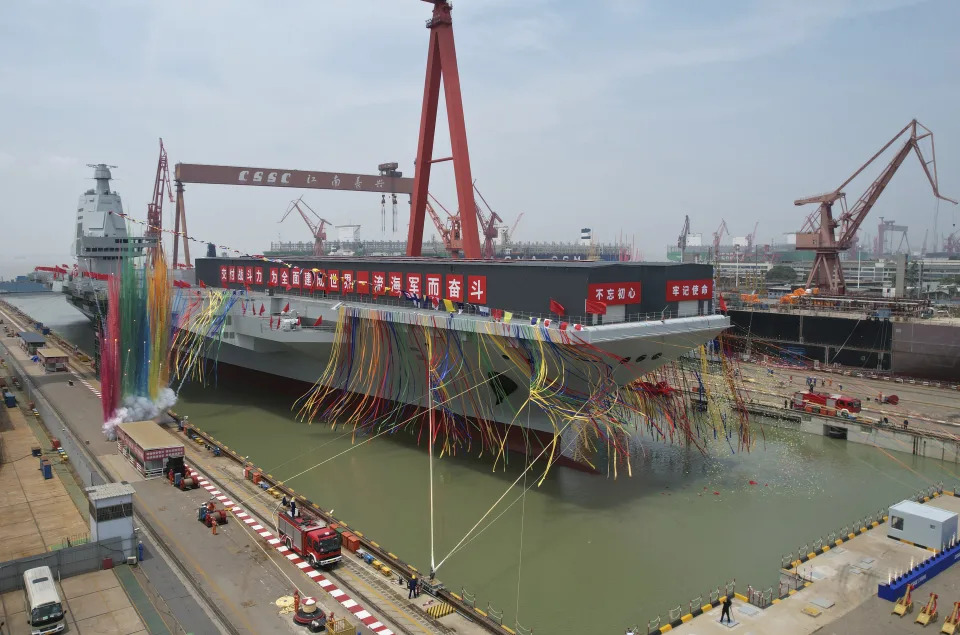Beijing on Friday launched a new-generation aircraft carrier, the first of its kind designed and built in China, a milestone for the country as it seeks to expand the range and power of its navy.
The Type 003 aircraft carrier, named Fujian, left a dry dock at a shipyard outside Shanghai in the morning and tied up at a nearby pier, state media reported.
State television CCTV showed Navy troops lined up next to the huge vessel as jets of water sprayed its deck and colored ribbons and smoke were released.
Equipped with the latest weaponry and aircraft launch technology, the ship’s capabilities are expected to rival those of Western aircraft carriers, as Beijing seeks to turn its navy, already the world’s largest, into a military force. with several aircraft carriers.
“This is an important milestone for the Chinese military-industrial complex,” said Ridzwan Rahmat, an analyst at Singapore-based defense intelligence firm Janes.
“It shows that Chinese engineers are now capable of autonomously manufacturing the full suite of surface combatants associated with a modern navy, including corvettes, frigates, destroyers, amphibious assault ships and now an aircraft carrier,” he added. “This ability to build a very complex warship from scratch will inevitably have various side effects and benefits for the Chinese shipbuilding industry.”
The country’s first aircraft carrier was a refitted Soviet vessel, while the second was built in China but based on a Soviet design. Both featured the “ski-jump” launch method, with a ramp at the end of their short runway to aid takeoff.
The Type 003 employs catapult launch, which experts say appears to be an electromagnetic-type system like the one originally developed by the US Navy. In Friday’s launch report, China’s official Xinhua News Agency confirmed that the Fujian had the electromagnetic system.
The People’s Liberation Army Navy has been modernizing for more than a decade to become a force capable of operating globally, rather than being confined to the immediate vicinity of the Chinese mainland.
Currently, it has about 355 ships, including submarines, and the United States estimates that its fleet will increase to 420 ships in 2025 and 460 in 2030. Despite being the largest by number of ships, at the moment its capabilities are very far from those of the United States.
The launching ceremony at the shipyard was presided over by Xu Qiliang, a Politburo member of the ruling Communist Party and vice chairman of the Central Military Commission. After Xu cut the tape, he smashed a champagne bottle against the Fujian’s bow, Xinhua reported. The dry port locks opened and the ship sailed into the harbor where she was moored.

